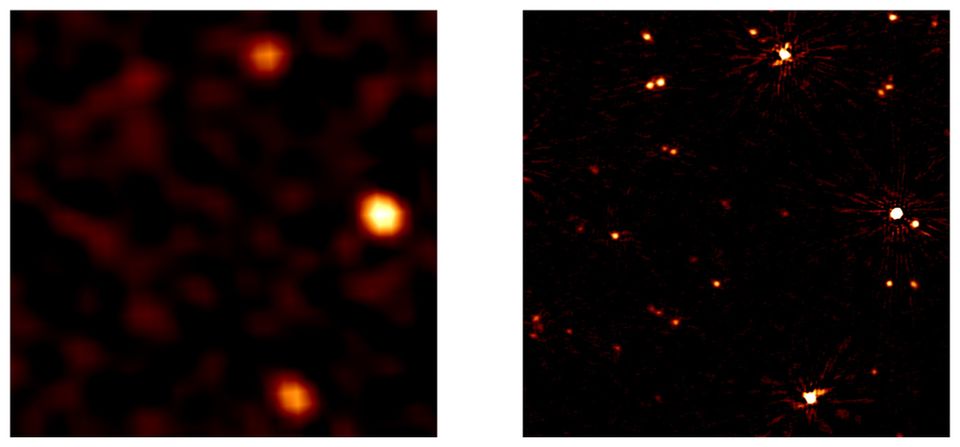Radio astronomers bypass disturbing Earth's atmosphere with new calibration technique
An international team of researchers led by astronomers from Leiden University (the Netherlands) has produced the first sharp radio maps of the universe at low frequencies. Thanks to a new calibration technique, they bypassed the disturbances of the Earth's ionosphere. They used the new method to study plasmas from ancient black hole bursts. Potentially, the technique might be useful for finding exoplanets that orbit small stars. The researchers report their technique in the journal Nature Astronomy.
The technique allowed astronomers to take clear radio images of the universe at frequencies between 16 and 30 MHz for the first time. This was thought to be impossible because the ionosphere, at about 80 kilometers above the Earth, interferes with observations at these frequencies.
LOFAR-telescope
The researchers used the LOFAR telescope in Drenthe, the Netherlands. This is currently one of the best low-frequency radio telescopes in the world. To test their technique, they studied a number of galaxy clusters that had previously only been studied in detail at higher frequencies.

Glasses
Thanks to the new images, it appears that the radio emission from these clusters is not evenly distributed across the entire cluster, but rather there is a spot pattern. "It's like putting on a pair of glasses for the first time and no longer seeing blurred," said research leader Christian Groeneveld (Leiden University, the Netherlands).
